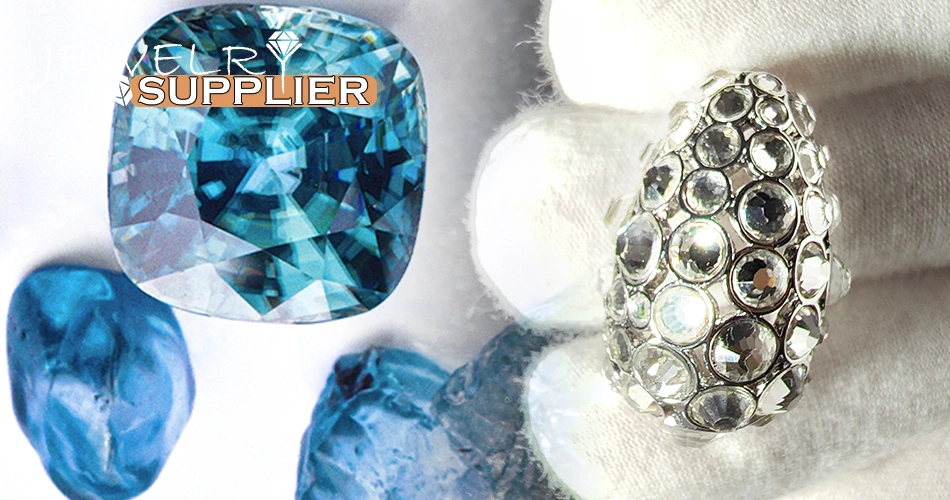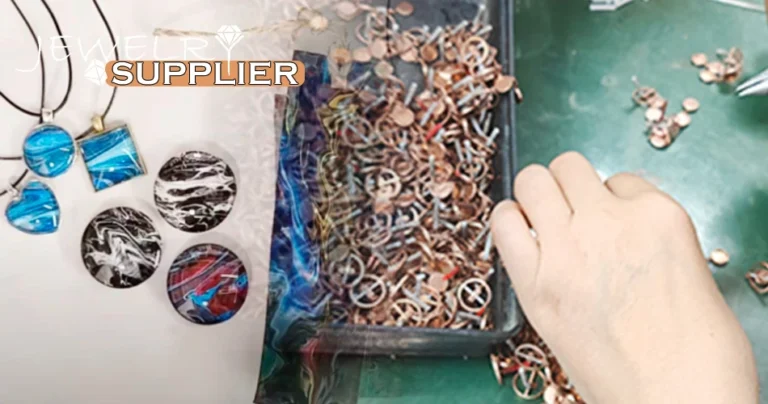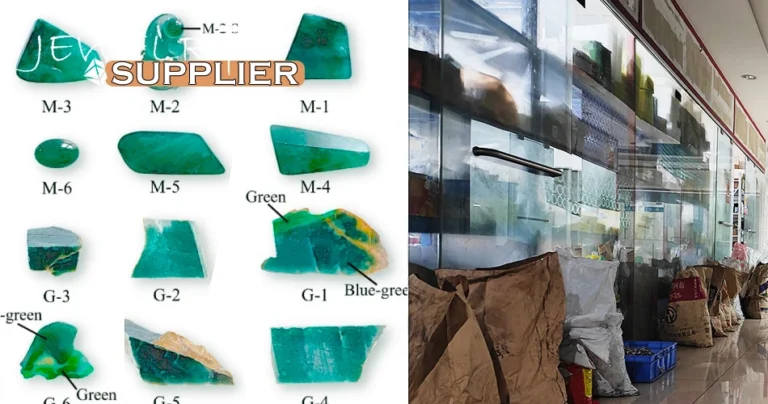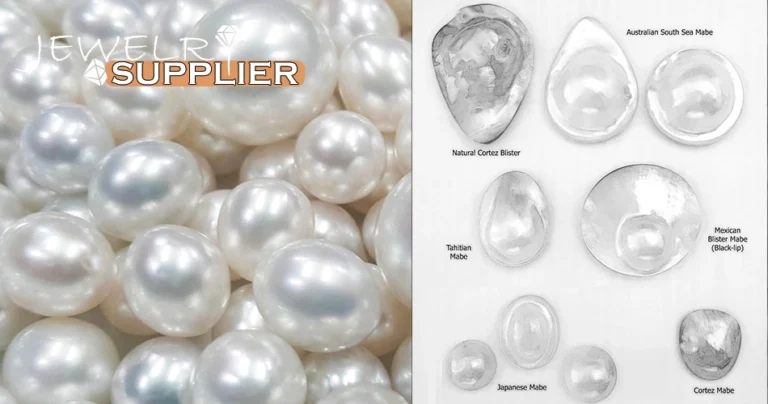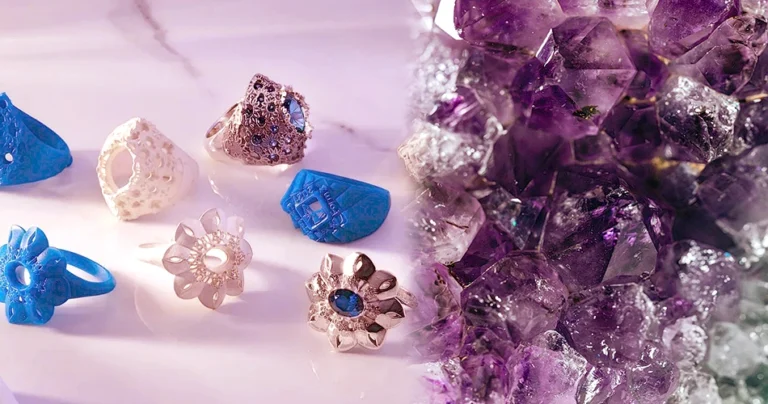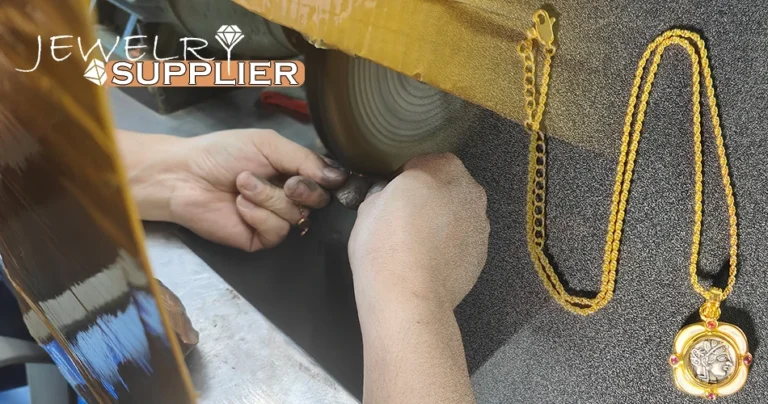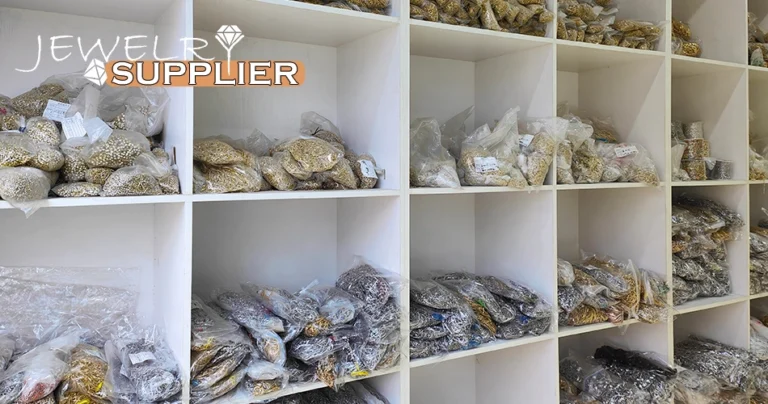Processing Techniques for Zircon Stones
The processing of zircon jewelry is a detailed and complex process. At the design stage, designers create detailed drawings based on initial ideas or customer requirements, either on paper or using CAD software. These drawings precisely indicate key information such as the size, position, quantity of zircon stones, and the thickness and strength of metal components. During the material selection phase, choosing the right zircon is crucial, taking into account factors like color, clarity, size, and shape.
Next, zircon undergoes precision cutting and polishing. Cutting shapes the zircon into the desired size while maximizing its luster, fire, and brightness. Polishing further enhances the surface quality, making it smoother and shinier. To ensure that the zircon is securely attached to the jewelry, drilling and welding techniques are employed. Drilling facilitates threading the zircon or connecting it with other components, while welding securely binds the metal parts together. Surface treatments, such as heat treatment, irradiation, and plating, further enhance the aesthetics and durability of the zircon jewelry. The entire processing procedure showcases the artisan’s exceptional skills and reflects a focus on detail, which are indispensable parts of zircon jewelry manufacturing.
Zircon Drawing Preparation
Drawing preparation is the most critical step in zircon jewelry design, as it determines the final appearance and structure of the piece and serves as the foundation for subsequent processing. Based on initial ideas or customer requests, designers quickly sketch some rough drafts on paper or using digital drawing software. These sketches may be rough but adequately express the basic design concept. Designers can choose traditional pencil and paper or use CAD software for digital drawing (for more details on CAD software, you can check Wikipedia).
During the drawing process for zircon jewelry, precise measurements are taken for each component, with specific dimensions indicated on the drawings, including the size, position, and quantity of zircon stones. In addition to the appearance design, the structural stability of the jewelry must also be considered, such as how to secure the zircon and the thickness and strength of the metal parts. To better illustrate the design effects, zircon jewelry designers may render the drawings, adding shadows, reflections, and other effects to make them look more realistic. Based on the rendered effects, designers may adjust certain details to ensure the final design is both aesthetically pleasing and functional.
The completed drawings are submitted to clients or team members for review. Necessary modifications are made based on feedback until the client is satisfied. The final approved drawings are then used to create technical production drawings, which include all detailed information such as material specifications and processing requirements. Once the design process and material selection are confirmed, along with the processing requirements, mass production can officially begin. Go to Jewelry supplier page.
Material Selection for Zircon Stones
When selecting suitable zircon rough stones, several factors must be considered, including color, clarity, size, and shape. Zircon is a silicate mineral with the chemical composition Zr[SiO₄], available in various colors such as colorless, blue, red, yellow, and green. Its hardness ranges from 6 to 7.5, and its density is between 3.90 and 4.73 g/cm³. Zircon has a high refractive index and high dispersion, making it visually similar to diamonds, and it is often used as a diamond substitute. Properly processed zircon material ensures the safety and aesthetics of zircon jewelry.
For more common materials, please click here to learn.
| Material Name | Characteristics |
| Cubic Zirconia | Cubic zirconia is the most common synthetic zircon, known for its high refractive index and dispersion, closely resembling diamonds. |
| Natural Zircon | Natural zircon is a silicate mineral with high hardness and luster. |
| Colored Zircon | Various colors of zircon, such as blue, pink, and yellow, can be achieved through heat treatment or other methods. |
| Colorless Zircon | Colorless and transparent, with a very high refractive index and dispersion, appearing similar to diamonds. |
| Diamond Simulant Zircon | Specifically mimics the cut and color of diamonds, looking extremely similar to them. |
Cutting and Polishing Process for Zircon Jewelry
The cutting and polishing of zircon jewelry are essential steps in the manufacturing process, as they directly affect the final product’s appearance and quality. The cutting of zircon aims to shape it into the desired form and size while maximizing its luster, fire, and brightness. The rough stone is initially cut to predetermined dimensions and shapes to remove excess material. The shape is then refined further to ensure that the angles and proportions of each facet meet design specifications. After cutting, zircon is polished using fine grinding wheels or polishing discs to achieve a smooth surface with high gloss.
Cutting Machine: Used for the initial cutting and shaping of zircon. It can be manually operated or automated, depending on the complexity and precision required.
Laser Cutting Machine: Suitable for cutting complex shapes and detailed work. Laser cutting is highly precise, reducing material waste and increasing production efficiency.
Polishing Machine: Used to polish the surface of cut zircon, making it smoother in preparation for subsequent polishing steps.
Faceted Cutting: Involves cutting multiple small flat surfaces on the zircon, known as facets. The angles and positions of each facet must be precisely calculated to ensure that light reflects in the best way, enhancing the stone’s brilliance, making it smoother and shinier.
Polishing Equipment:
Grinding Wheel Machine: Used for the initial grinding of zircon, removing burrs or uneven areas left during cutting.
Polishing Machine: Used for the final polishing of zircon, achieving a high gloss and smooth surface.
Ultrasonic Polishing Machine: Utilizes ultrasonic vibrations for polishing, capable of handling finer details.
Drilling and Welding Process for Zircon Jewelry
Drilling Process for Zircon Jewelry: This process is used for threading or connecting the jewelry with other components. Drilling is a crucial step in jewelry making, especially for items like necklaces and bracelets that require threading. The drilling process for zircon jewelry primarily involves securing the zircon in the jewelry, such as threading it onto a cord or chain to create pendants or bracelets. Since zircon is a very hard synthetic gemstone, drilling directly into it is typically avoided to prevent cracking or damage. Instead, zircon is usually set in a metal mount, which is then fixed onto the jewelry. However, if drilling into the zircon is necessary, special methods and techniques must be employed.
Welding Process: This mainly involves connecting metal components, as zircon itself is a gemstone and does not directly participate in the welding process. When welding jewelry, metals such as gold, silver, or platinum are typically used as the base. For jewelry containing zircon, the goal is to securely bond these metal components together using welding techniques while also fixing the zircon in place.
Marking Drilling Position: Use a specialized marking pen or tool to lightly mark the drilling position on the zircon, ensuring accuracy.
Drilling:
Securing the Zircon: Fix the zircon in a stable clamp to prevent movement during drilling.
Wet Operation: Continuously use coolant during drilling to prevent the zircon from cracking due to overheating.
Gentle Drilling: Use a low-speed drill, applying slow pressure to avoid excessive force that could cause cracking.
Diamond Drill Bit: Select a diamond drill bit suitable for the hardness of zircon to ensure precision and smoothness.
Welding: Set the zircon into a pre-designed metal mount. Assemble each metal piece according to the design blueprint. Use a flame welding torch or other heat source to heat the weld seam. When the temperature reaches the melting point of the solder, melt the solder and allow it to flow into the gaps between the metal components. Once the solder cools, the metal pieces are securely joined together.
Surface Treatment of Zircon
Electroplating: Use electroplating technology to apply a thin layer of metal (such as gold or rhodium) on the surface of zircon jewelry to enhance luster and provide protection.
Sandblasting: Use a sandblasting machine to shoot fine particles onto the jewelry surface, creating a matte or textured effect.
Engraving: Utilize a laser engraving machine or manual engraving tools to create patterns on the metal surface, adding decorative elements.
Enameling: Add a layer of colored enamel to the jewelry surface to enhance color richness.
Setting: Embed the zircon in a metal framework to ensure stability and enhance overall aesthetics.
Special Treatments:
Heat Treatment: This process involves high temperatures to alter the color of zircon, resulting in more desirable shades such as blue or golden yellow.
Irradiation Treatment: Use radioactive elements to irradiate zircon, causing a color change.
Heat Treatment (Common Method): This method can alter the color and type of zircon. It can be performed under different temperature and atmospheric conditions to produce various color effects. For instance, heat treatment under reducing conditions can yield blue or colorless zircon, while oxidation conditions may produce golden yellow or colorless zircon. The colors of heat-treated zircon are generally stable, although some may change under light or over time. This process can also improve zircon’s clarity and luster, but it may increase brittleness, making the stone more susceptible to wear or breakage.

